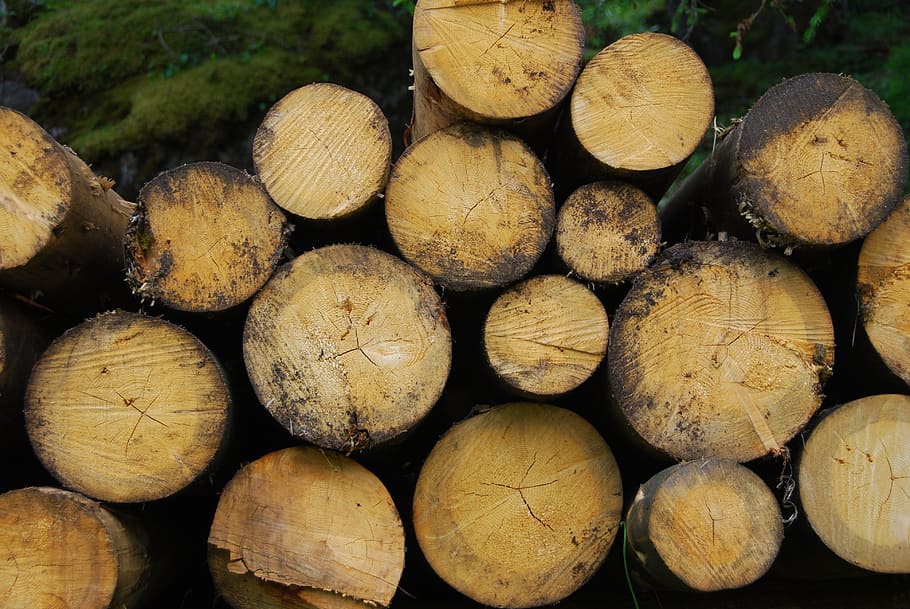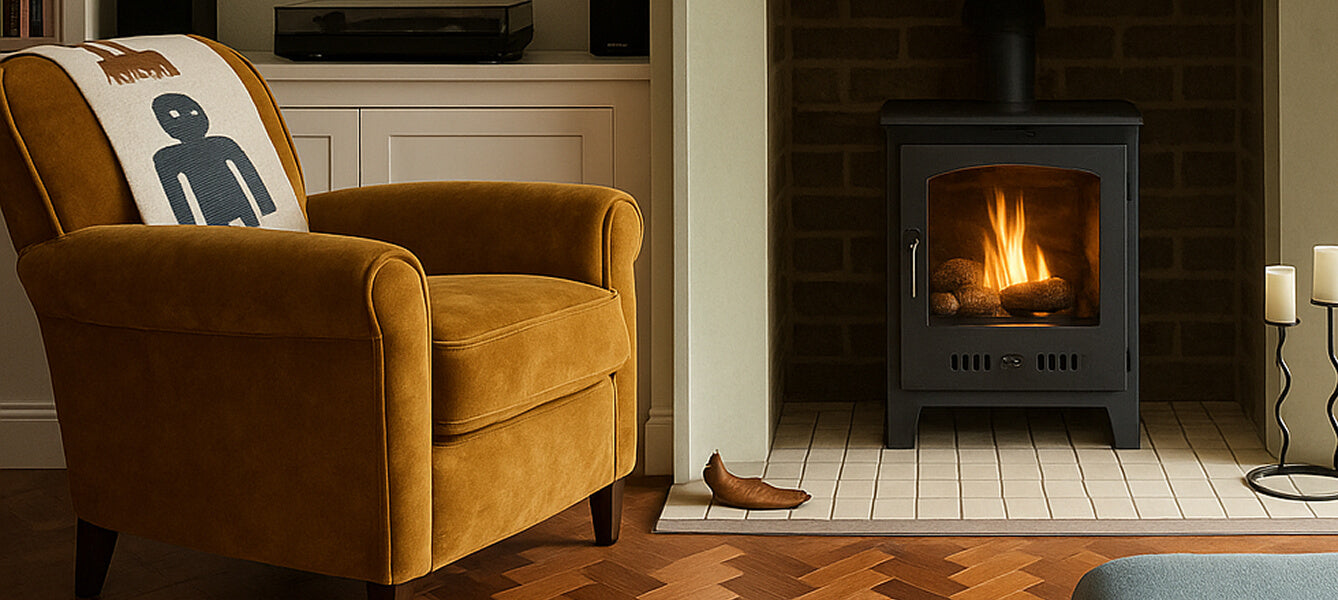
Eco-Friendly Alternative Fuels to Log Burners: Biomass to Coffee Logs
Lighting a real fire should feel cosy, not complicated. But with new rules around air quality and a growing awareness of environmental impact, many of us are rethinking what we burn and how.
Whether you're switching fuels by choice or necessity, the good news is: you don’t have to give up the glow of a real flame. From compressed wood bricks to bioethanol burners, there are smart, sustainable alternatives to traditional firewood.
This guide breaks down the most popular alternative fuels for log burners, including how they work, how they burn and how they compare.
Why Look Beyond Traditional Firewood?

Wood may be natural, but it’s not always the cleanest choice. Burning logs releases carbon dioxide, smoke and fine particles into the air. Older log burners can also be inefficient, pushing more heat (and pollutants) up the chimney than into the room.
That’s why many UK councils now require the use of certified Ready to Burn fuels with moisture levels under 20%. And it’s why new Ecodesign standards for log burners (introduced in 2022) aim to raise the bar on energy efficiency.
If you have an older stove or want to go greener, now’s the time to consider alternatives.
Quick Comparison: Alternative Fuels at a Glance
|
Fuel Type |
Real Flame |
Smoke-Free |
Moisture Level |
Eco Impact |
Cost Efficiency |
|
Biomass Pellets |
Yes |
Low |
Under 10% |
Uses timber industry waste |
High |
|
Wood Bricks |
Yes |
Low |
Under 10% |
Recycled wood |
High |
|
Coffee Logs |
Yes |
Medium |
Very Low |
Diverts waste from landfill |
Medium |
|
Paper Bricks |
Yes |
Variable |
Depends on drying |
Homemade from waste paper |
High if DIY |
|
Yes |
Yes |
Not applicable |
Carbon-neutral, plant-based |
Medium |
Biomass and Pellets: Clean-Burning and Convenient

Biomass covers a wide range of organic fuel sources, but for log burner alternatives, we’re usually talking about wood pellets or compressed bricks made from leftover timber industry waste.
How they work: Pellets are tightly compressed and low in moisture, which means they burn cleanly and efficiently. Most are used in pellet stoves with automated hoppers and thermostats.
Eco impact: Biomass fuels repurpose materials that would otherwise end up in landfill, making them a smart, sustainable option.
Best for: Consistent heat output, minimal smoke and easy temperature control.
Still want the ritual of refuelling, but with a cleaner burn? Biomass might be the ideal balance.
Many modern pellet stoves even allow programmable heating schedules and remote control. If you're upgrading an older log burner, this could be a chance to increase both efficiency and convenience.
Coffee Logs: Caffeine with a Kick
What if your morning brew could heat your living room?
Coffee logs are made from spent coffee grounds collected from cafés and businesses across the UK. They’re dried, compacted into briquettes and burn up to 20% hotter than seasoned logs.
Pros: High heat, low moisture and a clean appearance. Easy to store and handle.
Cons: Can produce smoke if they smoulder rather than burn cleanly. They're best used in well-ventilated stoves with good air flow.
Eco impact: Reduces landfill emissions by reusing organic waste. One of the greener choices available.
Explore how coffee logs can cut your waste and carbon footprint at the same time. If you're someone who loves a circular economy solution, this could be your perfect match.
Paper Bricks: DIY Fuel for the Resourceful Burner

If you love a weekend project and want to give junk mail a second life, paper bricks might be for you.
How to make:
- Shred old newspapers, junk mail or plain paper
- Soak the paper in a bucket of water for several days until it becomes pulp
- Use a briquette press to compress the pulp into bricks, squeezing out excess moisture
- Dry the bricks thoroughly for several weeks before burning
Burn time: Once dry, they burn steadily and for longer than loose paper.
Eco impact: Excellent reuse of materials but variable in emissions depending on how dry they are.
Making your own paper fuel? Just remember: the drier, the better. Damp bricks won’t burn efficiently and may produce unwanted smoke.
Bioethanol: Clean-Burning and Chimney-Free
Bioethanol is one of the cleanest-burning fuels available, and you don’t need a chimney or stove to use it. Just insert a bioethanol burner into your fireplace or choose a freestanding model.
What it is: Made by fermenting plant waste (like sugar beet, corn or wheat), bioethanol is considered a carbon-neutral fuel.
Burning benefits: No soot, no smoke and no ash. It produces only a small amount of carbon dioxide and water vapour, about the same as a few candles.
Setup: No chimney or flue required. Simply top up the burner and light the flame.
Want to skip installation altogether? Our bioethanol fireplaces are ready to enjoy straight out of the box.
Looking to convert an open fireplace? A bioethanol insert might be just what you need to modernise your setup.
What’s the Best Alternative Fuel for Your Log Burner?

The right choice depends on what you’re looking for:
- Lowest emissions: Bioethanol
- Best for heat output: Biomass pellets or bricks
- Creative and cost-effective: DIY paper bricks
- Waste-reducing innovation: Coffee logs
If your goal is to cut down on smoke and emissions without losing that cosy, flickering flame, you’ve got more options than ever.
Want to dig deeper into the cleanest option of all? Check out our full guide to bioethanol fireplaces and see what makes them different.
Thinking of Moving Away From a Log Burner Entirely?

Bioethanol fireplaces aren’t just an add-on. With sleek designs, real flames and no need for a chimney, they’re one of the easiest ways to enjoy firelight without the mess or maintenance.
Got questions? Take a look at our bioethanol fireplace FAQs, or get in touch. We’d love to help you find the cleanest, greenest flame for your space.
